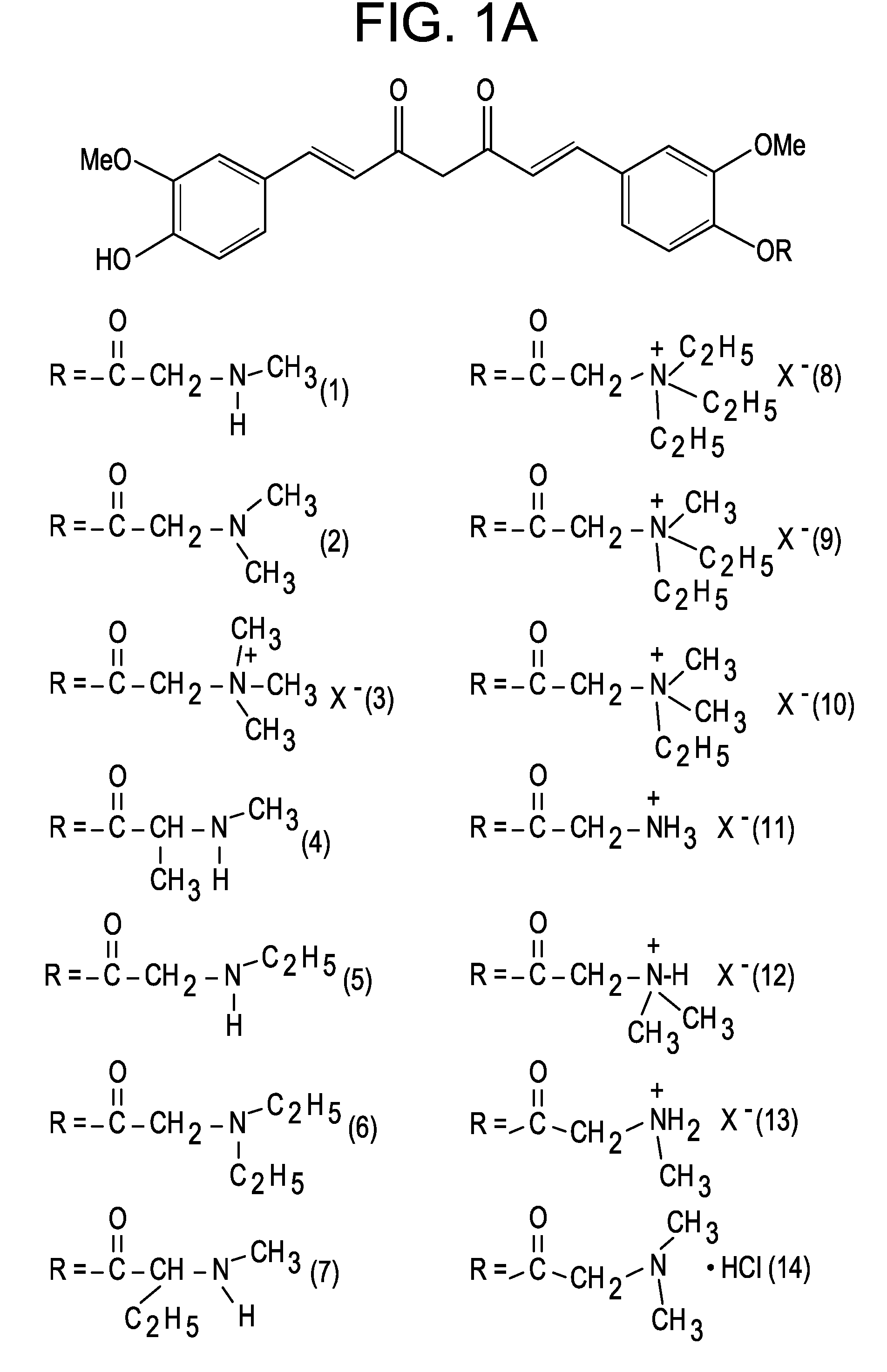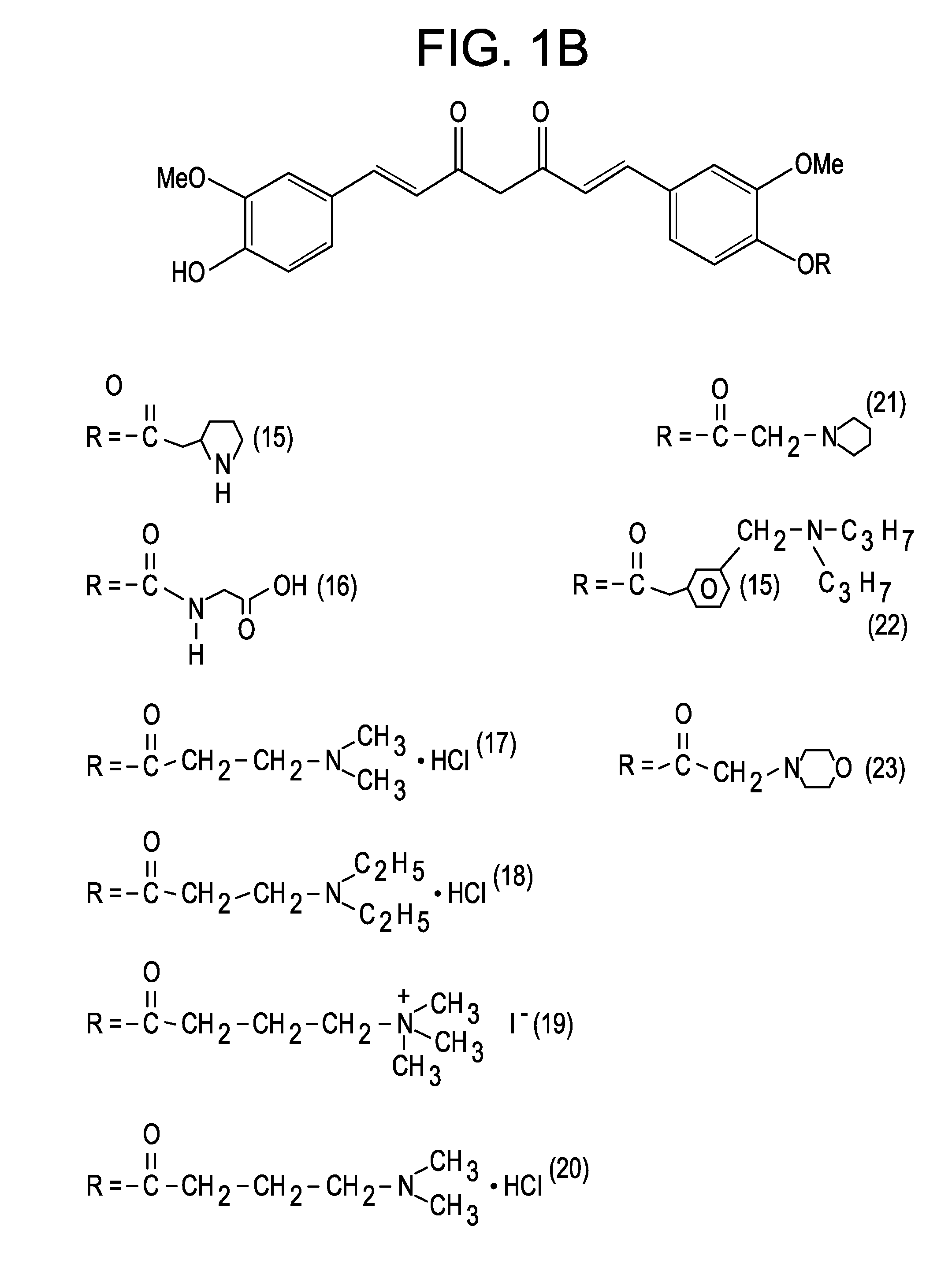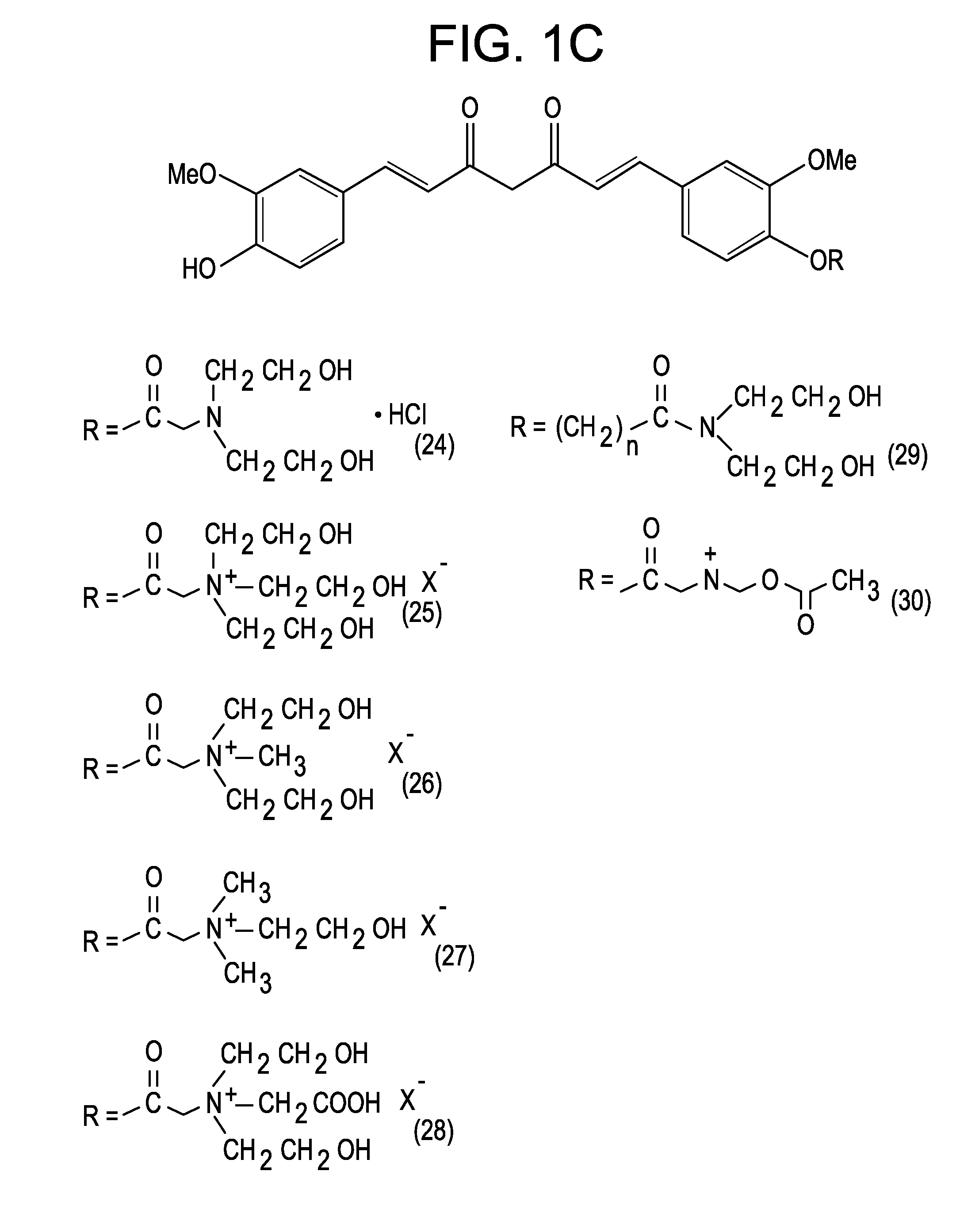Methylene blue—curcumin analog for the treatment of alzheimer's disease
a curcumin analog and alzheimer's disease technology, applied in the field of methylene blue — curcumin analog for the treatment of alzheimer's disease, can solve the problems of high bioavailability, large amount of curcumin that enters the bloodstream is rapidly metabolized, headache, rash and diarrhea, etc., to improve curcumin brain bioavailability, reduce the dose required, and high lipophilic
- Summary
- Abstract
- Description
- Claims
- Application Information
AI Technical Summary
Benefits of technology
Problems solved by technology
Method used
Image
Examples
Embodiment Construction
[0052]As used herein curcumin is also known as diferuloylmethane or (E,E)-1,7-bis(4-hydroxy-3-methoxyphenyl)-1,6-heptadiene-3,5,-dione. Curcumin may be derived from a natural source, the perennial herb Curcuma longa L., which is a member of the Zingiberaceae family. The spice turmeric is extracted from the rhizomes of Curcuma longa L. and has long been associated with traditional-medicine treatments used in Hindu and Chinese medicine. Turmeric was administered orally or topically in these traditional treatment methods.
[0053]In some embodiments, curcumin is intranasally administered so that it produces a brain tissue concentration of at least 0.1 μM, more preferably at least 1 μM, more preferably at least 5 μM, more preferably at least 20 μM.
[0054]Without wishing to be tied to a theory, it is believed that a daily intranasal dose of at least about 0.2 mg / kg would be sufficient to produce the above-cited brain tissue concentrations. More preferably, the dose is at least 1 mg / kg, more ...
PUM
| Property | Measurement | Unit |
|---|---|---|
| Time | aaaaa | aaaaa |
| Time | aaaaa | aaaaa |
| Time | aaaaa | aaaaa |
Abstract
Description
Claims
Application Information
 Login to View More
Login to View More - R&D
- Intellectual Property
- Life Sciences
- Materials
- Tech Scout
- Unparalleled Data Quality
- Higher Quality Content
- 60% Fewer Hallucinations
Browse by: Latest US Patents, China's latest patents, Technical Efficacy Thesaurus, Application Domain, Technology Topic, Popular Technical Reports.
© 2025 PatSnap. All rights reserved.Legal|Privacy policy|Modern Slavery Act Transparency Statement|Sitemap|About US| Contact US: help@patsnap.com



